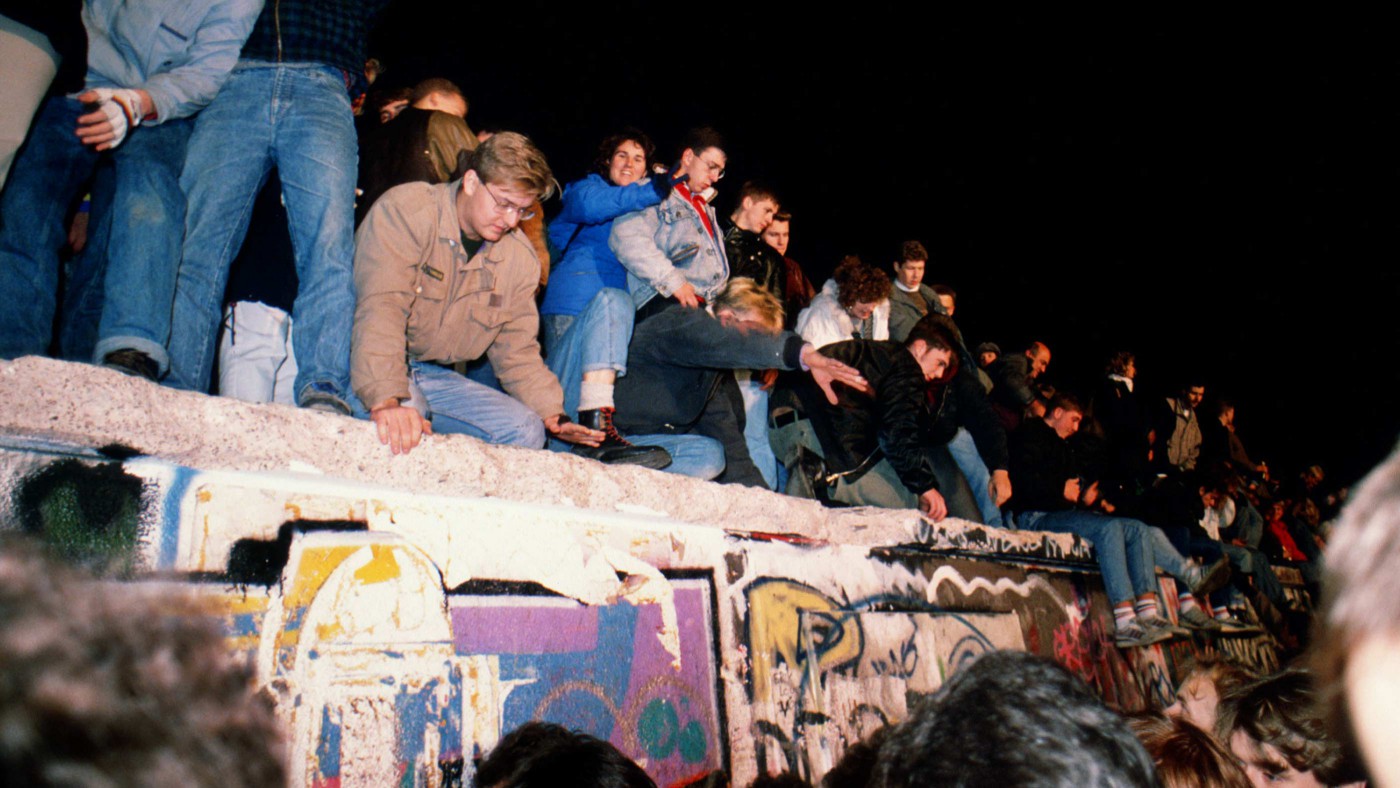Where were you on the evening of November 9, 1989? Most Germans over the age of 35 can answer that question. It was perhaps the most important and certainly the most cheerful day in the history of post-war Germany. And it was a day completely dominated by the celebration of freedom. Looking at the faces of East Berliners passing checkpoints to the West in tears and shouting “Freedom!” still affects me deeply. Nothing remotely comparable to that happened since in Germany.
And where was I? That very evening I was at my student apartment in Freiburg, reading Hayek. Not Road to Serfdom or Constitution of Liberty – which would be more suitable for the occasion – but his rather complex early work on business cycles, on which I was to write my Master’s thesis. Watching the unfolding events, I was in tears – like so many people across Germany from Freiburg to Dresden.
I wonder how Hayek – who also lived in Freiburg but in poor health at the age of 90 – received the news from Berlin. The publication of his last book The Fatal Conceit – the Errors of Socialism, together with his other writings in the 1930s, predicted the economic, political and moral decline of socialism, yet was ignored if not attacked by mainstream social scientists and intellectuals especially in Germany.
The decline of socialism came as a surprise to many mainstream economists who seemed to believe that technological progress could make central planning possible. Here is Nobel Laureate Kenneth Arrow in 1974: “Indeed, with the development of mathematical programming and high-speed computers, the centralised alternative no longer seems preposterous. After all, it would appear that one could mimic the workings of a decentralised system by an appropriately chosen centralised algorithm.”
In the mid-1980s GDR statistics claimed the country was the 10th strongest industrial nation in the world; many “experts” and media figures in the West believed that. If you measure output in tons of steel, numbers of cars or square meters of wall-paper, the GDR certainly did produce quite a lot. But without the measuring-rod of market prices, you can not know what the output is worth to society. That is what the experts learnt only after the wall came down.
The GDR was effectively bankrupt many years before 1989. It could no longer service its growing external debt: not even by selling visas both for entering and leaving the GDR or – yes – the freedom of some of its political prisoners to the West German government.
The GDR’s monopolised state-planned industries were rapidly decaying due to a lack of investment, innovation and entrepreneurship. It produced more environmental damage and human misery than added value. It is no accident that with the advent of the Hayekian “knowledge economy” and Arrow’s “high-speed computers” the decentralized system of the free market took off – and the “centralized alternative” of the GDR was lost.
Just how bad it was became clear to me when in 1992 I left all-too cozy Freiburg and joined as a Ph.D. researcher the pioneers founding the first Max-Planck-Institute for Research into Economic Systems in the former GDR in Jena, Thuringia. This is the place where a great university was founded in 1547 – Goethe, Schiller, Fichte, Humboldt, Hegel were there – and where Carl Zeiss and Ernst Abbe founded a world famous optical manufacturing firm in 1846.
But when I came to Jena, I was shocked: most people lived in the ugliest prefabricated buildings, and the old centre with its market square was now a huge waste-land turned parking square. Its medieval structure survived both the Battle of Jena in 1806 and the bombings in 1945. Yet it did not survive GDR town planning in 1968; the place was flattened and renamed Cosmonauts’ Square, offering space for tens of thousands of commandeered workers on a special day off to see Yuri Gagarin.
Still, I soon felt quite at home in this “new” part of unified Germany. Although many people lost their jobs or were kept on all sorts of state-funded-training programmes, I could feel their genuine pride in the city’s pre-communist history and their real willingness to restore it. Perhaps not by accident they even elected a liberal mayor.
In 1994, the “Verein für Socialpolitik” (the association of German-speaking economists) had its annual meeting in Jena. But many of my colleagues were faced with an inconvenient keynote speaker: Lothar Späth, former conservative governor of Baden-Württemberg and at the time CEO of Jenoptik, the firm that was once the world famous flagship of German optical manufacturer Carl Zeiss.
I remember Späth telling many stunned economists something like this:
“For the time being, Jenoptik can only survive with massive state subsidies. We are using these to completely re-invent Jenoptic. At the moment this means developing from scratch new products and production chains. We had to lay off thousands of workers but needed to keep the rest. However we also have to keep them away from our factory gates, because once they start producing the old things that we cannot sell, we would massively increase our losses!”
Meanwhile, Jena is once again a model city – at least by East-German standards: it has successfully developed innovative industrial clusters cooperating with many research institutes and the university. And even the old Cosmonauts’ Place has become more amicable.
But at the same time, Germany is expected to have its first ex-communist governor in Thuringia. A coalition of Social Democrats and Greens is rallying around the second largest party in the local elections, “Die Linke,” to ensure a left majority. Die Linke is the legal successor of the communist party that ruled the GDR and built the wall, 25 years ago – and reminds us that the anniversary should not be treated merely as a history lesson.


